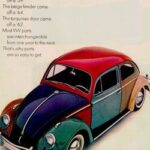When it comes to maintaining your 2014 Jeep Wrangler, brake pads are a critical component that should never be overlooked. Choosing the right brake pads is essential for ensuring safety and optimal performance, whether you’re navigating city streets or tackling rugged trails. Like many Jeep owners, you might find yourself wondering, “What are the best brake pads for my 2014 Jeep Wrangler?” The answer isn’t always straightforward, as it depends on your specific driving needs and preferences. Let’s delve into the world of brake pads and rotors to help you make an informed decision.
Understanding Brake Rotors: Solid vs. Vented
Before discussing brake pads, it’s helpful to understand the basics of brake rotors, as they work in tandem with pads to stop your vehicle. There are primarily three types of rotors:
- Solid Rotors: These are typically found on lighter vehicles as they are simpler and more cost-effective. They consist of a single piece of metal.
- Vented Rotors: A step up from solid rotors, vented rotors are designed with channels or fins between two rotor surfaces. This design allows for better heat dissipation, crucial for heavier vehicles like the Jeep Wrangler and for more demanding braking situations. The 2014 Jeep Wrangler, like many models, typically comes with vented rotors both in the front and rear for enhanced braking performance.
- Drilled and Slotted Rotors: These rotors take ventilation a step further by incorporating drilled holes and slots on the rotor surface. This design is intended to further improve heat dissipation and help remove brake dust and gas buildup between the pad and rotor. Drilled and slotted rotors often have a specific left and right orientation, which is important to note during installation to maximize their effectiveness.
Brake Pad Types: Choosing the Right Material
Now, let’s focus on brake pads themselves. Brake pads come in various materials, each with its own set of characteristics:
- Organic Brake Pads: Made from organic materials mixed with fibers, these pads are typically quieter and produce less dust. However, they tend to wear out faster and are less effective in high-performance or heavy-duty braking situations.
- Metallic Brake Pads: Containing metallic materials like steel, iron, or copper, metallic pads offer stronger braking power and better heat resistance. They are more durable than organic pads but can be noisier and produce more brake dust.
- Ceramic Brake Pads: As a premium option, ceramic brake pads are made from ceramic fibers and binding agents. They offer a good balance of performance, low noise, and low dust. Ceramic pads are known for their long lifespan and stable performance across a range of temperatures.
- Semi-Metallic Brake Pads: These pads offer a compromise, blending metallic and organic materials. They aim to provide improved performance over organic pads while being less aggressive than full metallic pads.
The “best” brake pad material depends on your driving style and the demands you place on your 2014 Jeep Wrangler’s braking system. For everyday driving, ceramic or semi-metallic pads are often excellent choices. If you frequently tow or haul heavy loads, or engage in off-road adventures, a more robust metallic or performance-oriented pad might be preferable.
Personal Experience and Aftermarket Options
Many Jeep owners, including myself, have explored aftermarket brake pad options to enhance braking performance. Initially, like many, I relied on auto shops to select brake components for me. However, after becoming more involved in the Jeep community and forums, I discovered the world of aftermarket brake solutions.
For my older TJ Wrangler, facing brake replacement due to mileage and wear, I opted for Powerstop Z16 kits for both the front and rear. These kits featured vented rotors with a solid surface, essentially OEM equivalents. I found them to be a reliable and effective upgrade, providing satisfactory stopping power, even feeling slightly improved compared to the worn-out brakes they replaced.
When preparing to replace the brakes on my newer 2017 Jeep Wrangler, which sees some towing duty with a trailer and golf cart, I decided to try the Powerstop Z36 series, marketed for towing and hauling. While the Z36 rotors are similar to the Z23 (vented and drilled/slotted), the Z36 sets come with different pads designed for increased stopping power under load. Interestingly, purchasing the front and rear Z36 sets separately proved to be more cost-effective than buying a combined set.
Alt text: Powerstop Z36 Truck & Tow Brake Kit for enhanced braking performance, ideal for vehicles like the 2014 Jeep Wrangler used for towing.
Are Powerstop Z36 brake pads the absolute “best” for every 2014 Jeep Wrangler? Objectively defining “best” is challenging without rigorous testing under controlled conditions. However, based on positive personal experience with Powerstop products on multiple Jeeps, and the generally favorable reviews within the Jeep community, they represent a strong contender. Ultimately, choosing brake pads often involves a degree of personal preference and reliance on trusted brands and anecdotal evidence, alongside marketing claims and “seat-of-the-pants” feel.
Making the Right Choice for Your 2014 Jeep Wrangler
When selecting brake pads for your 2014 Jeep Wrangler, consider these factors:
- Driving Habits: Daily commuting, off-roading, towing, or performance driving will influence your pad choice.
- Desired Performance: Prioritize stopping power, low dust, low noise, or longevity?
- Budget: Brake pad prices vary significantly based on material and brand.
- Reviews and Recommendations: Consult online forums, reviews, and fellow Jeep owners for real-world feedback.
Upgrading your 2014 Jeep Wrangler’s brake pads can significantly improve your driving experience and safety. By understanding rotor and pad types, and considering your specific needs, you can confidently choose the best brake pads for your vehicle.
